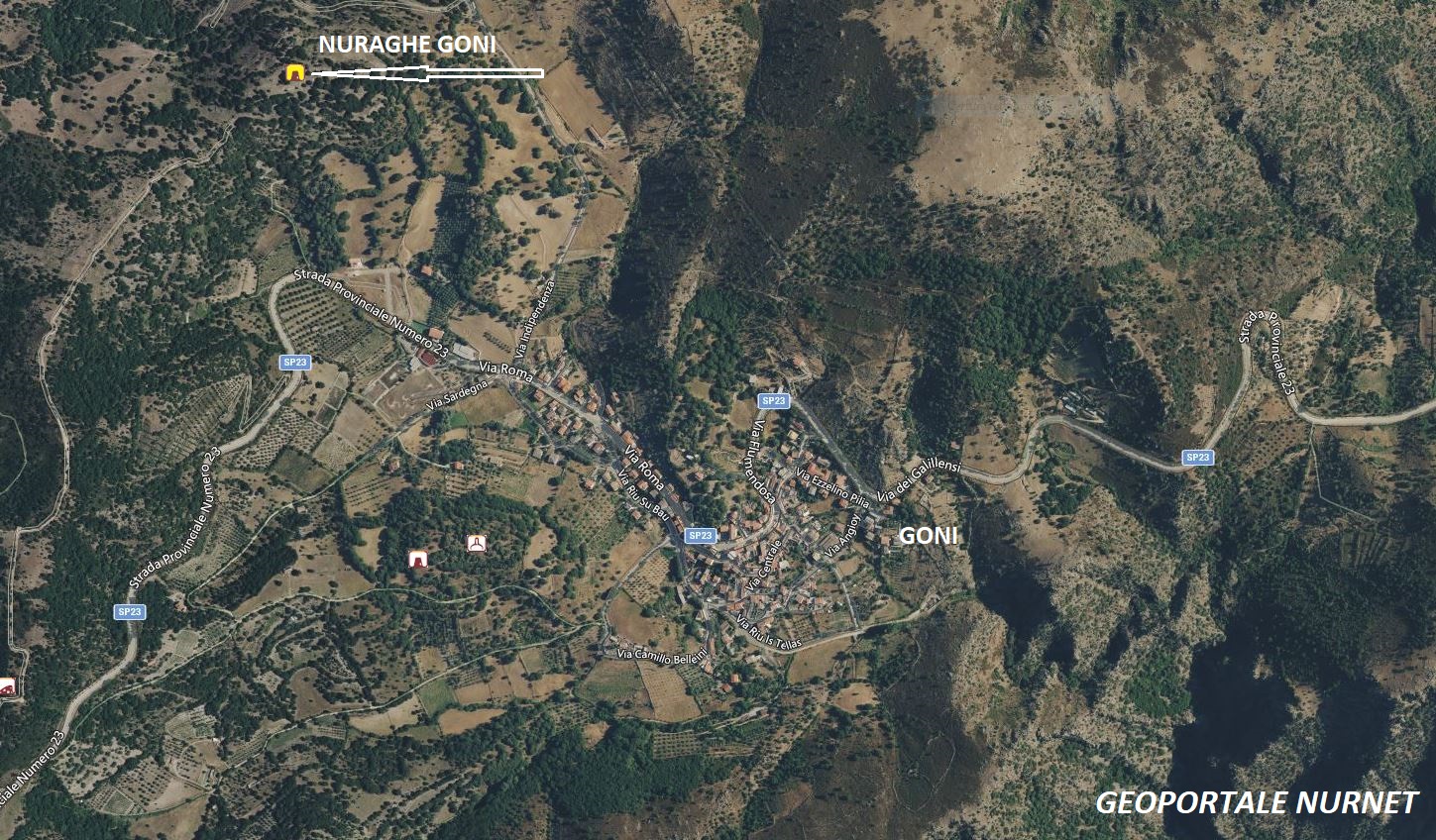The nuraghe Goni, “one of the best-preserved ‘monotorre’ in Sardinia, overlooks the green valleys of Gerrei and the village of Goni, in the southeastern part of the Island.
Its white profile rises solitary atop a plateau, from its position it controls a vast territory that also includes the shores of Lake Mulargia. The nuraghe stands just outside the inhabited area of the eponymous municipality, a small village immersed in the Flumendosa valley. The monument takes advantage of the rocky outcrops, incorporated into the base, to adapt to the profile of the relief and develop in height in a harmonious and regular manner. The view of the underlying plain is perfect. You will reach it at the end of a path, partly paved, that winds up through the vegetation for several hundred meters on the slope of the plateau. The structure is made of hewn limestone blocks arranged in regular rows that reach up to three and a half meters in height and then give way to long and narrow slabs. The external diameter is about ten meters, while the current total height exceeds eight meters.
The tower has ‘lived’ at least two construction phases, due to a restoration intervention – which took place already in the Nuragic age – caused by a partial collapse of the masonry structure. After passing through the entrance, surmounted by a lintel, you will access a corridor in which you will notice a niche on the right. Here there is a staircase interrupted after the first five steps, which originally led to the terrace. Following the collapse, the space has been adapted as a guard post. In the central chamber, you will admire a vault attholosperfectly intact, closed at the top by a slab. There are three niches arranged in a cross, one of which leads to a small and narrow room, perhaps a storeroom. On the left, however, between the corridor and another niche, you will observe a triangular ‘window’, through which a steep staircase led to the upper floor.
(From Sardegna Turismo)
The photos of nuraghe Goni are by: Marco Cocco, Nicola Castangia, Gianni Sirigu, Andrea Mura-Nuragando Sardegna, Pietrino Mele, and Francesca Cossu.












